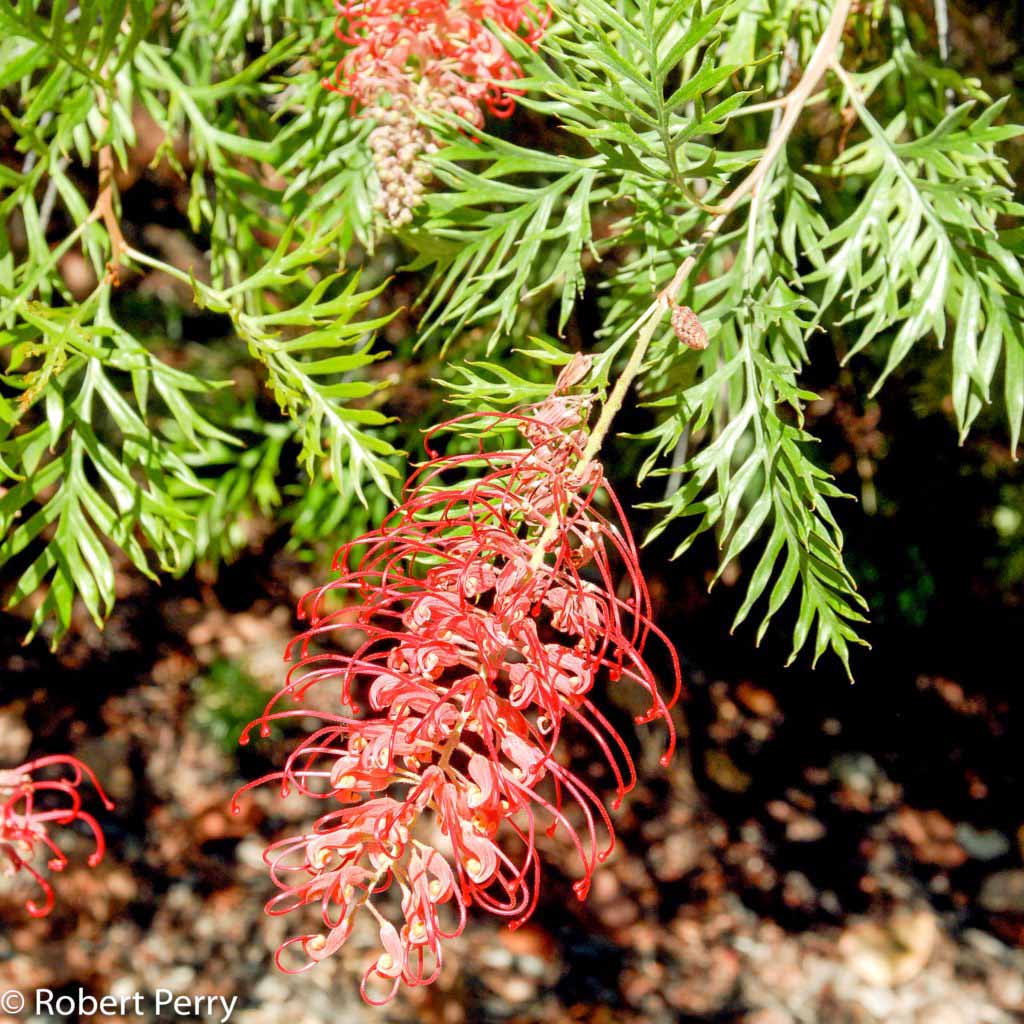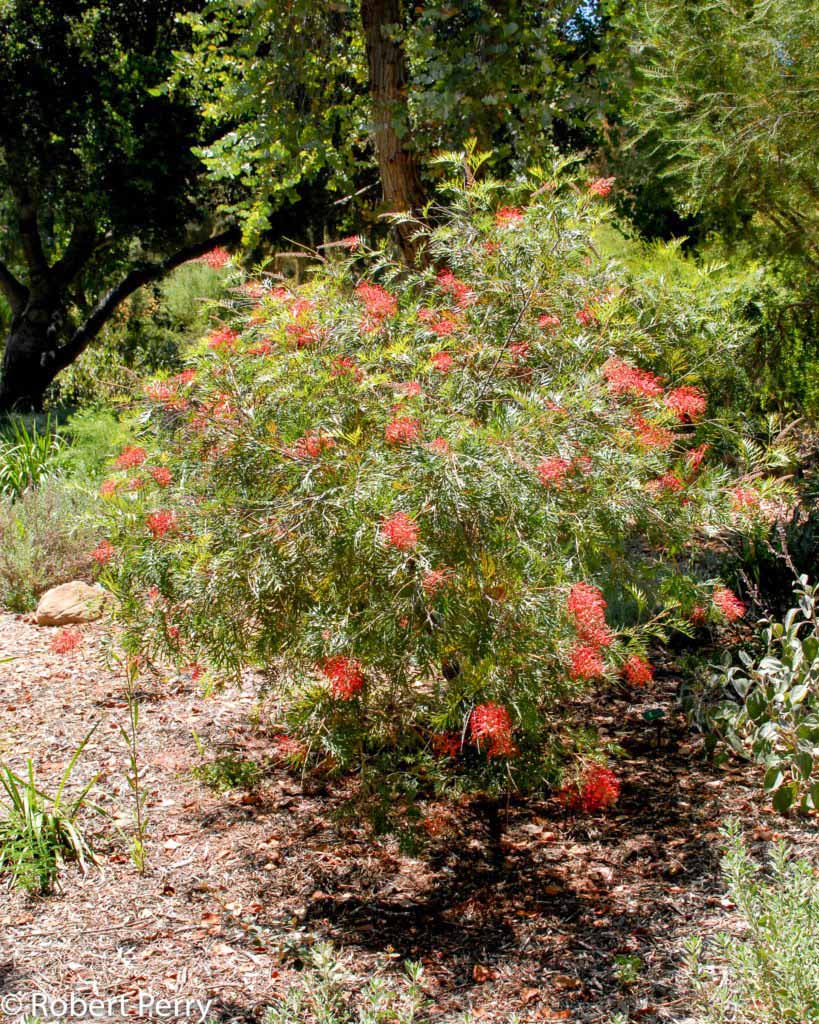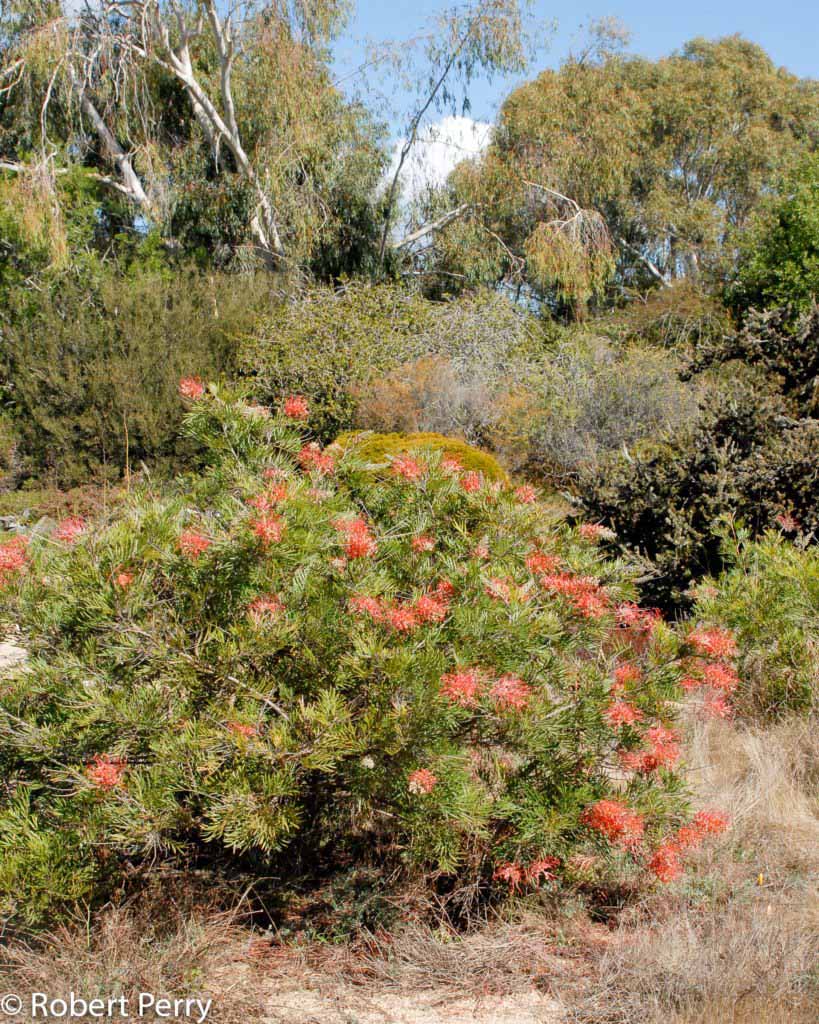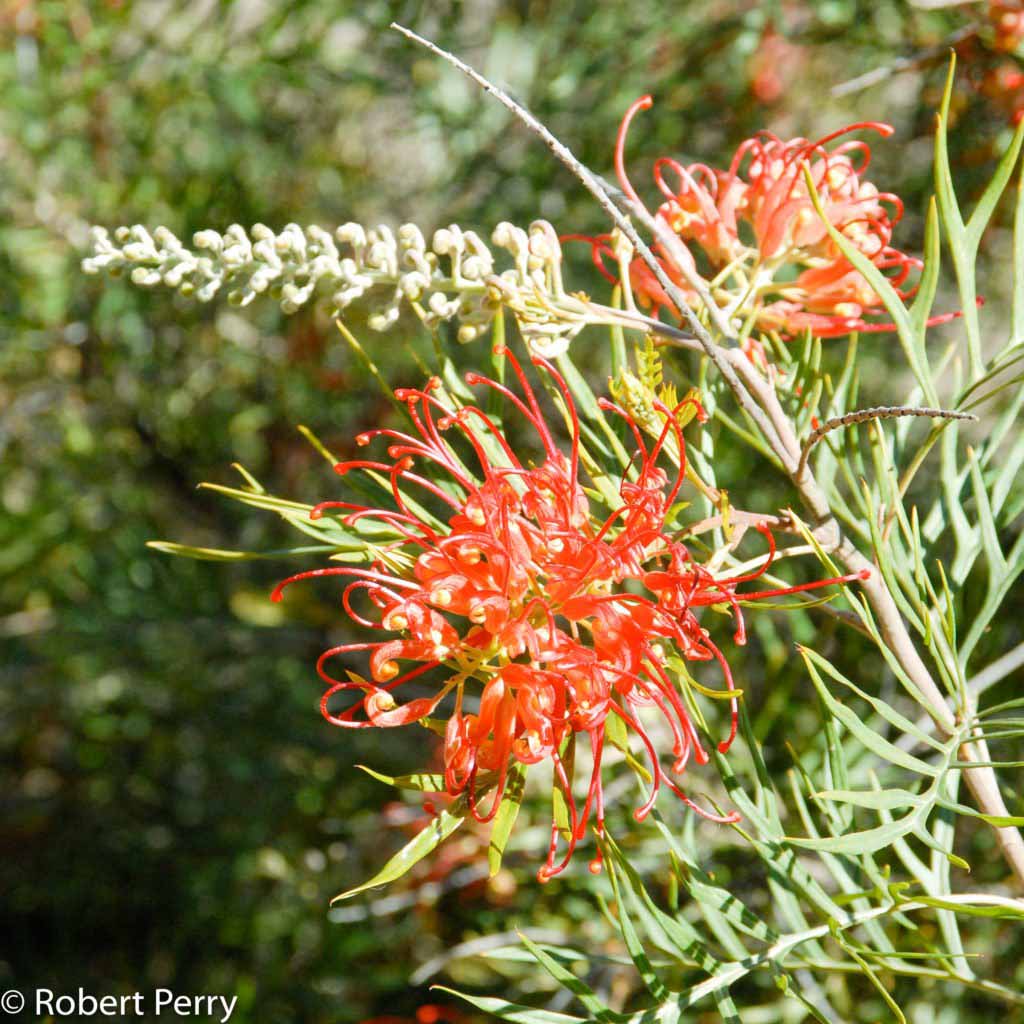Grevilleas are sometimes used as showy accent plants in waterwise gardens. While adapted to low water use, they primarily come from areas of acidic clay soil in their native Australia which means they can be challenging to grow in the many areas of southern California with quickly draining slightly alkaline soil. They tend to turn yellowish due to lower availability of calcium in the soil than the soils with which they had evolved.
We include the plant on this site, primarily as a reference, and because these plants are often purchased at nurseries when people see their flowers, but then do not know how to care for them.
This plant profile is included in this site as a reference for two primary reasons:
- If you already have this plant in your landscape, this information can be used to know how to care for it.
- If you already have this plant in your landscape, you can use this information to learn which of our recommended plants have the same recommended watering needs, making them potential choices for grouping together if you will be adding new plants to the existing area.
In general, instead of this plant, we recommend planting appropriate California native plants whenever possible.
In addition to their beauty, California native plants offer the most additional benefits beyond just low water use, including habitat for the birds, butterflies, and pollinators who evolved here with them. This adds value and beauty in your landscape beyond just a pretty plant, allowing the landscape to actively contribute to the environment instead of just using less water. Grevillea blooms do provide nectar for hummingbirds and certain pollinators, but many California native species are more valuable habitat plants overall for our region. You can find our top recommended native plant choices on our Plant Finder by selecting “California Native” and learn more about California native plants here.
To learn what exactly California native plants are and how they are different from other low water plants, visit this link.
For visual interest or other reasons, some people may also want to mix in other non-native low-water demanding plant choices even though they do not have the same ecological value as native plants. For that reason, we feature a number of non-native waterwise selections on this site as well. However, we see native plants as the best “go to” for most landscape or garden choices! We encourage people to consider planting at least 50% of their landscape to native plants. See our Garden Designs section or visit our Waterwise Demonstration Garden in Montclair for plenty of inspiration.
A small to medium size evergreen shrub with an upright mounding habit, 4-6 ft. tall and as wide. Foliage has an open and airy quality that is comprised of 6-8 in. long bipinnately divided bright green leaves. Large red and pink flowers grow in 4-5 in. long terminal racemes and hang gracefully from stems. Flowering is most intense from late spring through summer, but can occur intermittently all year.
Robyn Gordon grevillea prefers well-drained soils, sun to partial shade and regular supplemental water during winter and spring. Established plants do well with reduced summer moisture.



